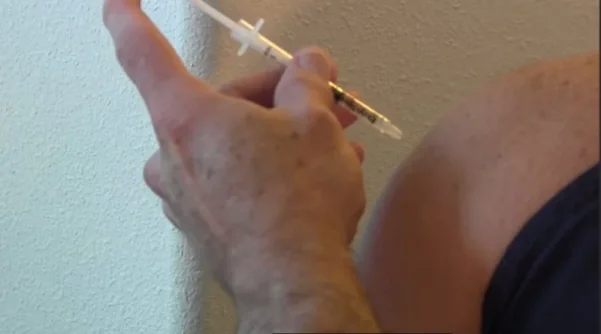Dr. John Crisler
Physician
Thank you, EP! That is very cool info. This dispels that Bro Science about warming the oil then, too.Jasen, great questions about the different carrier oils and their respective viscosities as well as pH.
Firstly, pH isn't a factor in Oil based Injectables as pH is a measure of the amount of Hydrogen Ions is an AQUEOUS solution.
Now lets figure out which oil is best to use:
Flow Rate can be derived from Poiseuille's Law: Q = ∆p π R^4 / (8 η L)
where
Q is flow rate
∆p is the pressure differential on both sides
R is the radius of the needle
η is the viscosity of the fluid
L is the length of the needle
As you can see from the equation, pressure gradients when drawing are negligible due to the small cross sectional area of the needle acting as an effective choke. I ran an experiment with different gauge syringes and our Testosterone Cypionate in Sesame Oil.
[TABLE="width: 443"]
[TR]
[TD][TABLE="width: 627"]
[TR]
[TD]Size of Needle[/TD]
[TD]25G[/TD]
[TD]27G[/TD]
[TD]29G[/TD]
[TD]31G[/TD]
[/TR]
[TR]
[TD]Amount drawn in 1 minute[/TD]
[TD]2mL[/TD]
[TD]0.8mL[/TD]
[TD]0.32mL[/TD]
[TD]0.07mL[/TD]
[/TR]
[/TABLE]
[/TD]
[TD][/TD]
[TD][/TD]
[TD][/TD]
[TD][/TD]
[/TR]
[TR]
[TD][/TD]
[TD][/TD]
[TD][/TD]
[TD][/TD]
[TD][/TD]
[/TR]
[/TABLE]
As the results show the amount drawn becomes exponentially smaller with a smaller gauge needle. This is due to the Radius^4 variable in our equation.
So what else does Poiseuille's law teach us? When you have a small radius changing the viscosity won't cause a huge difference in flow rates. It's the radius value that dominates the equation, not the viscosity, pressure differential or length. From this we can determine that the carrier oil wouldn't make a measurable difference in draw time.
Using the above data I recommend either a 27G or 29G needle to draw and inject Testsoterone Cypionate/Enanthate for a SQ injection. Preferably a 29G as it will only take 1-2 minutes out of a patient's week to draw their dose and 10-20 seconds to inject it.
I personally use a 1/2" 29ga insulin syringe. I inject into the gluteal region, just like the old IM shots, just with a shorter needle, so it goes into the fat. This particular needle works great for me.















